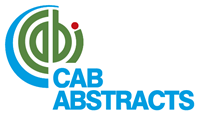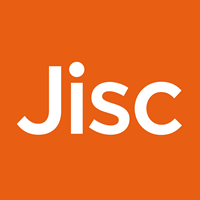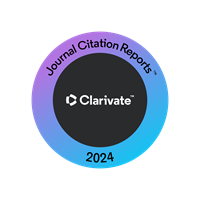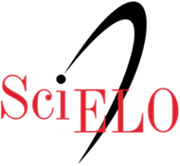Selection of arbuscular mycorrhizal fungi for sugarcane in four soils with the presence of dark septate endophytes
Abstract
The present study aimed to select efficient arbuscular mycorrhizal fungi (AMF) for sugarcane growth and P nutrition in four soils that spontaneously contained dark septate endophytes (DSE). The effect of nine AMF isolates was evaluated individually in sugarcane presprouted seedlings (SP81-3250) grown under greenhouse conditions for a 120-day period. The isolates that stimulated plant growth in the soils with low P availability were Acaulospora colombiana (ACOL), Claroideoglomus etunicatum (CETU), Gigaspora margarita (GMAR), Rhizophagus clarus (RCLA) and Scutellospora calospora (SCAL). Compared to the Yellow Argisol, which had the highest P level, the Red-Yellow Argisol, with an intermediate P content, increased plant height. Compared to the other treatments, inoculation with ACOL, RCLA, and SCAL resulted in higher foliar P content in plants grown in soils with high to intermediate P levels. Root colonization by AMF and DSE was verified in the plants, with the coexistence of both fungal groups in the same plant and/or root fragment. However, AMF colonization was low compared to DSE colonization. The cooccurrence of DSE and AMF was higher in the plants inoculated with ACOL, RCLA, SCAL, and Dentiscutata heterogama. ACOL, CETU, GMAR, RCLA, and SCAL are AMF isolates that have the potential to establish a mycorrhizal inoculant for sugarcane that would be effective in several soils.
Downloads
References
Aziz, T., & Habte, M. (1987). Determining vesicular-arbuscular mycorrhizal effectiveness by monitoring P status of leaf disks. Canadian Journal of Microbiology, 33(12), 1097-1101. DOI: 10.1139/m87-191
Basu, S., Rabara, R. C., & Negi, S. (2018). AMF: The future prospect for sustainable agriculture. Physiological and Molecular Plant Pathology, 102(1), 36-45. DOI: 10.1016/j.pmpp.2017.11.007
Cardoso, E. J. B. N., Cardoso, I. M., Nogueira, M. A., Baretta, C. R. D. M., & Paula, A. M. (2010). Micorrizas Arbusculares na aquisição de nutrientes pelas plantas. In J.O. Siqueira, F. A. Souza, E. J. B. N. Cardoso, & S. M. Tsai (Eds.), Micorrizas: 30 anos de pesquisas no Brasil (p. 153-214). Lavras, MG: UFLA.
Cordell, D., & White, S. (2011). Peak phosphorus: clarifying the key issues of a vigorous debate about long-term phosphorus security. Sustainability, 3(10), 2027-2049. DOI: 10.3390/su3102027
Debnath, A., Karmakar, P., Debnath, S., Roy Das, A., Saha, A. K., & Das, P. (2015). Arbuscular mycorrhizal and dark septate endophyte fungal association in some plants of Tripura, North East India. Current Research on Environmental & Applied Mycology, 5(4), 398-407. DOI: 10.5943/cream/5/4/12
Della Monica, I. F., Saparrat, M. C. N., Godeas, A. M., & Scervino, J. M. (2015). The co-existence between DSE and AMF symbionts affects plant P pools through P mineralization and solubilization processes. Fungal Ecology, 17(1), 10-17. DOI: 10.1016/j.funeco.2015.04.004
Ferreira, D. F. (2011). Sisvar: a computer statistic alanalysis system. Ciência e Agrotecnologia, 35(6), 1039-1042. DOI: 10.1590/S1413-705420raji11000600001
Freire, L. R., Balieiro, F. C., Zonta, E., Anjos, L. H. C., Pereira, M. G., Lima, E., ... Polidoro, J. C. (2013). Manual de calagem e adubação do Estado do Rio de Janeiro. Brasília, DF: Embrapa; Seropédica, RJ: Editora Universidade Rural.
Gucwa-Przepióra, E., Chmura, D., & Sokołowska K. (2016). AM and DSE colonization of invasive plants in urban habitat: a study of Upper Silesia (southern Poland). Journal of Plant Research, 129(4), 603-614. DOI: 10.1007/s10265-016-0802-7
Instituto Brasileiro de Geografia e Estatística [IBGE]. (2018). Indicadores IBGE: estatística da produção agrícola. Retrieved on September 10, 2019 from https://sidra.ibge.gov.br/home/lspa/brasil
Hardoim, P. R., Overbeek, L. S., Berg, G., Pirttilä, A. M., Compant, S., Campisano, A., … Sessitsch, A. (2015). The hidden world within plants: Ecological and evolutionary considerations for defining functioning of microbial endophytes. Microbiology and Molecular Biology Reviews, 79(3), 293-320. DOI: 10.1128/MMBR.00050-14
Hermann, E. R., & Câmara, G. M. S. (1999). Um método simples para estimar a área foliar da cana-de-açúcar. Revista da Sociedade dos Técnicos Açucareiros e Alcooleiros do Brasil, 17(5), 32-34.
Jarstfer, A. G., & Sylvia, D. M. (1995). Aeroponic culture of AMF. In A. Varma, & B. Hock (Ed.), Mycorrhiza: Structure, function, molecular biology and biotechnology (p. 427-441). Berlin, GE: Springer Verlag.
Jin, H., Yan, Z., Liu, Q., Yang, X., Chen, J., & Qin, B. (2013). Diversity and dynamics of fungal endophytes in leaves, stems and roots of Stellera chamaejasme L. in northwestern China. Antonie van Leeuwenhoek, 104(6), 949–963. DOI: 10.1007/s10482-013-0014-2
Kelly, R. M., Edwards, D. G., Thompson, J. P., & Magarey, R. C. (2005). Growth responses of sugarcane to mycorrhizal spore density and phosphorus rate. Australian Journal of Agricultural Research, 56(12), 1405-1413. DOI: 10.1071/AR04185
Kiriachek, S. G., Azevedo, L. C. B. D., Peres, L. E. P., & Lambais, M. R. (2009). Regulation of arbuscular mycorrhizae development. Revista Brasileira de Ciência do Solo, 33(1), 1-16. DOI: 10.1590/S0100-06832009000100001
Klein, C., & Agne, S. A. A. (2012). Fósforo: de nutriente à poluente! Revista Eletrônica em Gestão, Educação e Tecnologia Ambiental, 8(8), 1713-1721. DOI: 10.5902/223611706430
Köhl, L., Lukasiewicz, C. E., & Heijden, M. G. A. (2016). Establishment and effectiveness of inoculated arbuscular mycorrhizal fungi in agricultural soils. Plant, Cell and Environment, 39(1), 136-146. DOI: 10.1111/pce.12600
Landell, M. G. A., Camapana, M. P., Figuereido, P., Xavier, M. A., Anjos, I. A., Dinardo-Miranda, L. L, ... Miguel, P. E. M. (2013). Sistema de multiplicação de cana-de-açúcar com uso de mudas pré-brotadas (MPB), oriundas de gemas individualizadas. Campinas, SP: IAC.
Mandyam, K. G., & Jumpponen, A. (2015). Mutualism-parasitism paradigm synthesized from results of root-endophyte models. Frontiers in Microbiology, 5(1), article 776, 1-13. DOI: 10.3389/fmicb.2014.00776
Nagaraj, K., Priyadharsini, P., & Muthukumar, T. (2015). Mycorrhizal and septate endophytic fungal associations in gymnosperms of southern India. Anales de Biología, 37(1), 83-94. DOI: 0.6018/analesbio.37.8
Nasim, G., Ali, A., Munawar, A., & Bajwa, R. (2008). Seasonal dynamics of AM fungi in sugarcane (Saccharum officinarum L. CV SPF-213) in relation to red rot (Colletotrichum falcatum) disease from Punjab, Pakistan. Pakistan Journal of Botany, 40(6), 2587-2600.
Nogueira, A. R. A., & Souza, G. B. (2005). Manual de laboratórios: solo, água, nutrição vegetal, nutrição animal e alimentos. São Carlos, SP: Embrapa Pecuária Sudeste.
Nouri, E., Breuillin-Sessoms, F., Feller, U., & Reinhardt, D. (2014). Phosphorus and Nitrogen Regulate Arbuscular Mycorrhizal Symbiosis in Petunia hybrida. PLoS ONE, 9(3), 1-14. DOI: 10.1371/journal.pone.0090841
Novais, C. B., Borges, W. L., Saggin Júnior, O. J., Sbrana, C., Giovannetti, M., & Siqueira, J. O. (2017). Técnicas básicas em micorrizas arbusculares. Lavras, MG: UFLA.
Owen, D., Williams, A. P., Griffith, G. W., & Withers, P. J. A. (2015). Use of commercial bio-inoculants to increase agricultural production through improved phosphorus acquisition. Applied Soil Ecology, 86(1), 41-54. DOI: 10.1016/j.apsoil.2014.09.012
Rosetto, R., Dias, F. L. F., & Vitti, A. C. (2010). Fertilidade do solo, nutrição e adubação. In L. L. Dinardo-Miranda, A. C. M. P. Vasconcelos, & M. G. A. Landell (Eds.), Cana-de-açúcar (p. 221-237). Campinas, SP: IAC.
Sceverino, J. M., Gottlieb, A., Silvani, V. A., Pérgola, M., Fernández, L., & Godeas, A. M. (2009). Exudates of dark septate endophyte (DSE) modulate the development of the arbuscular mycorrhizal fungus (AMF) Gigaspora rosea. Soil Biology & Biochemistry, 41(8), 1753-1756. DOI: 10.1016/j.soilbio.2009.04.021
Silva, F. C. (2009). Manual de análises químicas de solos, plantas e fertilizantes. Brasílila, DF: Embrapa Informação Tecnológica.
Simpson, R. J., Oberson, A., Culvenor, R. A., Ryan, M. H., Veneklaas, E. J., Lambers, H., … Richardson, A. E. (2011). Strategies and agronomic interventions to improve the phosphorus-use efficiency of farming systems. Plant and Soil, 349(1), 89-120. DOI: 10.1007/s11104-011-0880-1
Souza, A. E., & Fonseca, D. S. (2009). Fosfato. Brasília D.F.: Departamento Nacional de Produção Mineral. Economia Mineral do Brasil (DNPM). Retrieved on Oct. 24, 2017 from http://www.dnpm.gov.br/dnpm/publicacoes/serie-estatisticas-e-economia-mineral/outras-publicacoes-1/7-2-fosfato
Spagnoletti, F. N., Tobar, N. E., Prado, A. F., Chiocchio, V. M., & Lavado, R. S. (2017). Dark septate endophytes present different potential to solubilize calcium, iron and aluminium phosphates. Applied Soil Ecology, 111(1), 25-32. DOI: 10.1016/j.apsoil.2016.11.010
Sruthilaxmi, C. B., & Babu, S. (2017). Micorbial bio-inoculants in Indian agriculture: Ecological perspectives for a more optimized use. Agriculture, Ecosystems and Environment, 242(1), 23-25. DOI: 10.1016/j.agee.2017.03.019
Thangavelu, M., & Raji, M. (2016). Arbuscular mycorrhizal and dark septate endophyte fungal association in Asparagus. Turkish Journal of Botany, 40(1), 662-675. DOI: 10.3906/bot-1602-11
Surendran, U., & Vani, D. (2013). Influence of arbuscular mycorrhizal fungi in sugarcane productivity under semiarid tropical agro ecosystem in India. International Journal of Plant Production, 7(2), 269-278. DOI: 10.22069/IJPP.2012.986
Varma, A. (2008). Mycorrhiza state of art, genetics and molecular biology, eco-function, biotechnology, eco-physiology, structure and systematics. Berlin, GE: Springer. DOI: 10.1007/978-3-540-78826-3
Vergara, C., Araujo, K. E. C., Urquiaga, S., Schultz, N., Balieiro, F. C., Medeiros, P. S., … Zilli, J. E. (2017). Dark septate endophytic fungi help tomato to acquire nutrients from ground plant material. Frontiers in Microbiology, 8(2437), 1-12. DOI: 10.3389/fmicb.2017.02437
Xie, L., Zhang, W., Qin, L., Lan, T., Narisawa, K., Li, S., … Liao, S. (2013). Effects of dark septate endophytes (DSE) on sugarcane seedling growth. Journal of Southern Agriculture, 44(11), 1827-1830. DOI: 10.3969/j
DECLARATION OF ORIGINALITY AND COPYRIGHTS
I Declare that current article is original and has not been submitted for publication, in part or in whole, to any other national or international journal.
The copyrights belong exclusively to the authors. Published content is licensed under Creative Commons Attribution 4.0 (CC BY 4.0) guidelines, which allows sharing (copy and distribution of the material in any medium or format) and adaptation (remix, transform, and build upon the material) for any purpose, even commercially, under the terms of attribution.




















































